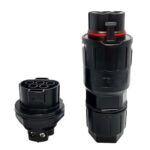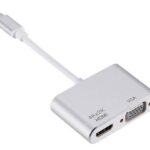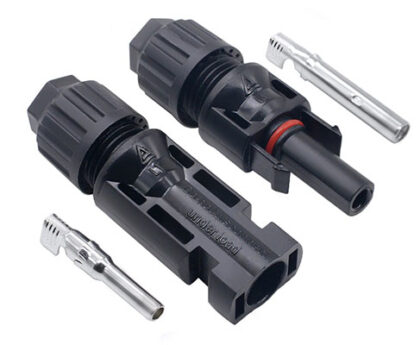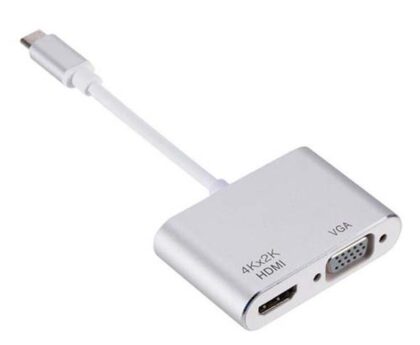M8 and M12 connectors are both types of circular connectors commonly used in industrial automation and control systems. They are designed to transmit electrical signals and power between devices, such as sensors, actuators, and controllers.
M8 connectors have a diameter of 8 millimeters and are typically used for lower-voltage, lower-current applications. D coded M12 connectors have a diameter of 12 millimeters and are designed for higher-voltage, higher-current applications.
In this blog post, we will explore the physical differences, common applications, and electrical characteristics of M8 and M12 connectors. We will also compare the two types of connectors and discuss the factors to consider when choosing between them.
Physical Differences Between M8 and M12 Connectors
There are several physical differences between M8 and M12 connectors that make them suitable for different applications.
Size
The most obvious difference between M8 and M12 connectors is their size. M8 connectors have a diameter of 8 millimeters, while M12 connectors have a diameter of 12 millimeters. This makes M12 connectors 50% larger in diameter than M8 connectors.
Shape
M8 and M12 connectors have a circular shape, but the shape of the connectors can vary depending on the specific model and application. Some M8 connectors have a straight, cylindrical shape, while others have a hexagonal shape that allows for a more secure connection. M12 connectors can also have a straight or hexagonal shape.
Number of Pins
M8 and M12 connectors can have a different number of pins, depending on the specific model and application. M8 connectors can have as few as three pins and as many as eight pins. M12 connectors can have as few as four pins and as many as 12 pins.
Applications of M8 and M12 Connectors
M8 and M12 connectors are used in a variety of industrial automation and control applications. Let’s look at some examples of common applications for each type of connector.
M8 Connectors: Examples of Common Applications
- Sensors: M8 connectors are commonly used to connect sensors, such as proximity sensors, photoelectric sensors, and encoders, to control systems.
- Actuators: M8 connectors can be used to connect actuators, such as solenoid valves and motors, to control systems.
- Communication: M8 connectors can be used to transmit data and signals between devices, such as industrial controllers, I/O modules, and HMI panels.
M12 Connectors: Examples of Common Applications
- Sensors: M12 connectors are also used to connect sensors, such as pressure sensors and temperature sensors, to control systems.
- Actuators: M12 connectors can be used to connect high-power actuators, such as hydraulic pumps and motors, to control systems.
- Communication: M12 connectors can be used for high-speed data transmission and communication between devices, such as industrial controllers, I/O modules, and HMI panels.
Electrical Characteristics of M8 and M12 Connectors
M8 and M12 connectors have different electrical characteristics that make them suitable for different applications.
Voltage Rating
The voltage rating of a connector is the maximum voltage that can be safely transmitted through the connector. M8 connectors have a lower voltage rating than M12 connectors, typically in the range of 10-30V. M12 connectors have a higher voltage rating, typically in the range of 30-60V.
Current Rating
The current rating of a connector is the maximum current that can be safely transmitted through the connector. M8 connectors have a lower current rating than M12 connectors, typically in the range of 0.5-5A. M12 connectors have a higher current rating, typically in the range of 2-10A.
Signal Transmission Capabilities
M8 and M12 connectors can be used to transmit different types of signals, such as digital signals, analog signals, and high-speed data. M8 connectors are typically used for lower-speed signal transmission, while M12 connectors are capable of transmitting higher-speed signals.
Comparison of M8 and M12 Connectors
So, which type of connector is best for your application – M8 or M12? Here are some advantages of each type of connector to consider:
Advantages of M8 Connectors
- Smaller size: M8 connectors are smaller in diameter than M12 connectors, which can be an advantage in applications where space is limited.
- Lower cost: M8 connectors are typically cheaper than M12 connectors due to their smaller size and lower voltage and current ratings.
- Easy to install: M8 connectors are generally easier to install than M12 connectors due to their smaller size and lighter weight.
Advantages of M12 Connectors
- Higher voltage and current ratings: M12 connectors have higher voltage and current ratings than M8 connectors, which makes them suitable for higher-power applications.
- Higher-speed signal transmission: M12 connectors are capable of transmitting higher-speed signals than M8 connectors, making them suitable for high-speed data transmission applications.
- More robust: M12 connectors are generally more robust and durable than M8 connectors due to their larger size and higher voltage and current ratings.
Factors to Consider When Choosing Between M8 and M12 Connectors
When choosing between M8 and M12 connectors for your application, there are several factors to consider:
- Voltage and current requirements: Consider the voltage and current requirements of your application and choose a connector with a suitable rating.
- Signal transmission requirements: Consider the speed and type of signals that need to be transmitted and choose a connector with suitable transmission capabilities.
- Space constraints: If space is limited, M8 connectors may be a better choice due to their smaller size.
- Cost: Consider the cost of the connectors and choose the one that fits your budget.
- Installation: Consider the ease of installation and choose a connector that is easy to install in your application.
Conclusion:
M8 and M12 connectors are both useful for industrial automation and control applications, but they are suitable for different applications due to their differences in size, shape, number of pins, voltage and current ratings, and signal transmission capabilities. Consider the specific requirements of your application and choose the connector that best meets those needs.




